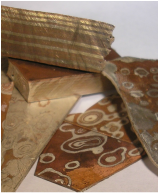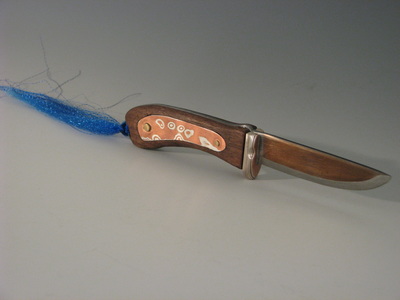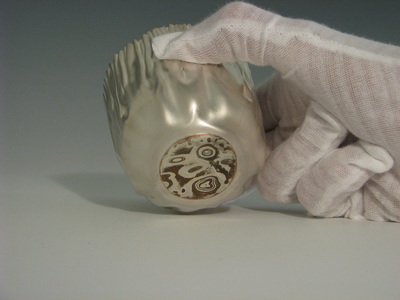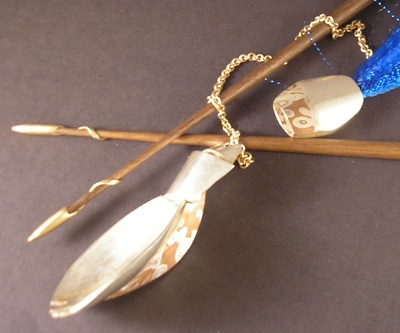
In Japan from the late 1600’s to the mid 1800’s the samurai sword transitioned from being a tool for fighting battles into a symbol of the warrior class. Retaining its truly awesome functionality as a weapon in the hands of a skilled samurai, it was the quality and amount of decoration on the sword hilt (tsuba) and sheath that became an indicator of one’s social status and wealth. Mokume -gane was invented by Denbei Shoami, a 17th century master metalsmith from the Akita prefecture. Mokume-gane comes from the Japanese word for “wood grain metal”. “The majority of the patterns created emulate wood grain.” It is formed with hammer blows and sliced or ground to reveal irregular striations. The level of craftsmanship demonstrated in many of these sword furnishings is second to none. The sword smiths who made these weapons developed a wide array of techniques for use in the ornamentation. Master-apprentice relationships allowed for extensive knowledge of metallurgy to be passed down and expanded. Mokume-gane has been rediscovered from ancient pieces and the traditional technique evolved. Using the mokume-gane technique the smith would create laminated metal billets that were fused by heat and pressure. (Photo is of billets I made.) The billets, composed of various combinations of contrasting metals such as gold, silver and copper alloys. Billets were forged, carved and finished to produce uniquely patterned metal stock, then used to fabricate parts for the samurai sword “furniture”. The beautiful patterns in these pieces for the tsuba would reflect similar patterns developed in the forging of the sword blade. Mokume-gane as traditionally practiced was a very difficult process to learn; this was partly due to the difficulty of successfully fusing the metals and partly due to the skill required to forge the laminated billet down to useable material without delaminating it. The resulting aesthetics revealed the warrior's status.
Originally mokume-gane was used in swords, later it was formed into vessels. Today it is jewelry, prominently wedding bands. How it is made has evolved through time and technology. The multiple layers of metal create designs that are unique.
I studied and created a method to create mokume-gane pieces for my BFA thesis. Each billet I make leads to designs that are unique. Mokume-gane is magic. 2023 I traveled to San Diego, CA to gain more knowledge to be able to create larger pieces. Continual learning and pushing myself, leads to mastery of this ancient technique.
Originally mokume-gane was used in swords, later it was formed into vessels. Today it is jewelry, prominently wedding bands. How it is made has evolved through time and technology. The multiple layers of metal create designs that are unique.
I studied and created a method to create mokume-gane pieces for my BFA thesis. Each billet I make leads to designs that are unique. Mokume-gane is magic. 2023 I traveled to San Diego, CA to gain more knowledge to be able to create larger pieces. Continual learning and pushing myself, leads to mastery of this ancient technique.




